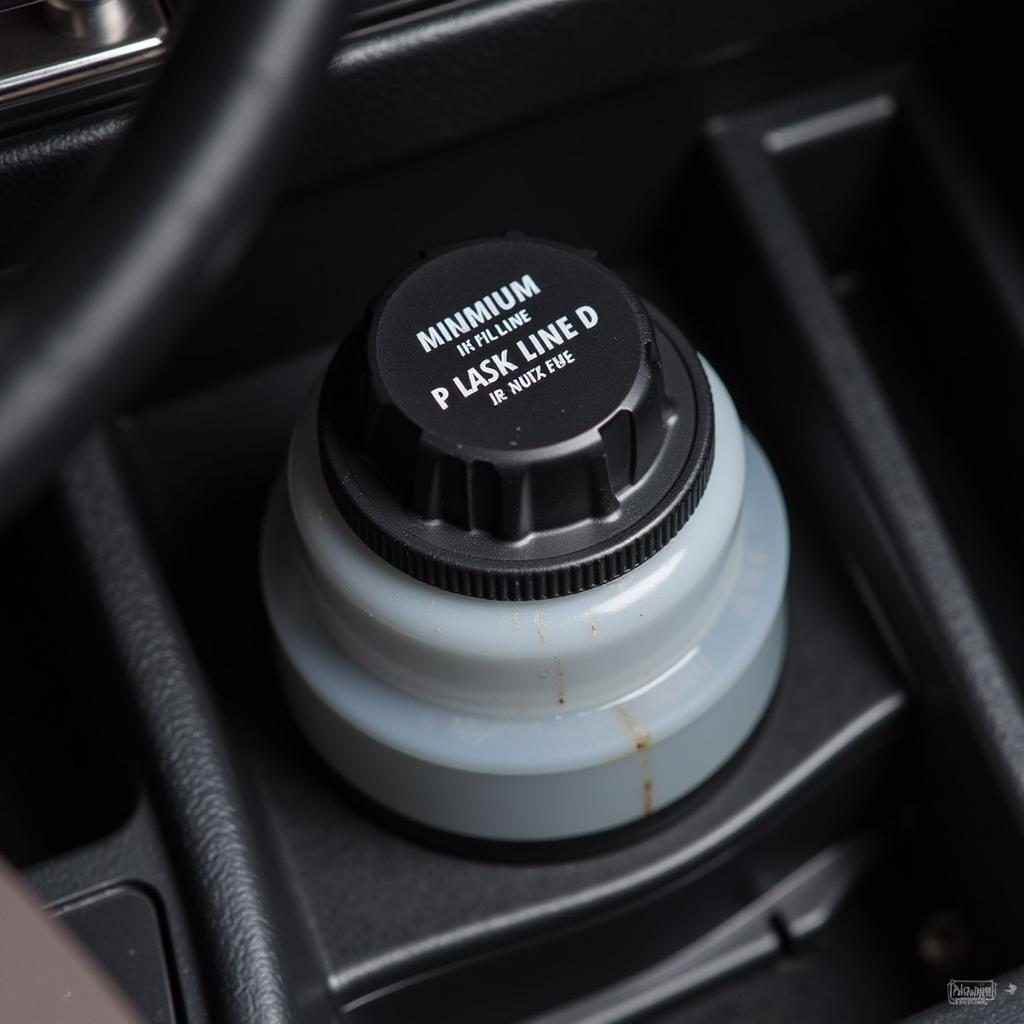Seeing a brake warning light illuminated on your Audi A4’s dashboard can be unsettling. This light, often appearing as a red circle with an exclamation mark or the word “BRAKE,” signals a potential issue within your braking system. While it might not always indicate a critical problem requiring immediate attention, it’s crucial to address it promptly to prevent compromising your safety and that of others on the road. This comprehensive guide will delve into the common causes of an illuminated brake warning light on an Audi A4 and provide you with potential solutions to rectify the issue.
Understanding Your Audi A4’s Brake Warning System
Before we delve into the specifics, it’s beneficial to understand how your Audi A4’s brake warning system operates. This system is designed to alert you to potential problems within the braking system using various sensors and indicators. The illuminated brake warning light could indicate several issues, ranging from a simple issue like low brake fluid to more complex problems like worn brake pads or a malfunctioning ABS system.
Common Causes of an Illuminated Brake Warning Light
1. Low Brake Fluid Level
One of the most common and straightforward reasons for the brake warning light to appear is low brake fluid. Your car’s braking system relies on hydraulic pressure to function correctly, and brake fluid is the lifeblood of this system. Over time, brake fluid levels can decrease due to wear and tear on the brake pads, leading to the illumination of the warning light.
Solution:
- Check your brake fluid reservoir, typically located under the hood on the driver’s side.
- If the fluid level is low, carefully top it up to the recommended level using the correct brake fluid type specified in your owner’s manual.
 Audi A4 Brake Fluid Reservoir
Audi A4 Brake Fluid Reservoir
2. Worn Brake Pads
Brake pads are essential components of your braking system, designed to grip the brake rotors and slow down or stop your vehicle. Over time, these pads wear down due to friction. Most modern cars, including your Audi A4, have wear sensors in the brake pads. When the pad material wears down to a certain level, these sensors trigger the brake warning light.
Solution:
- If you suspect your brake pads are worn, it’s best to have them inspected by a qualified mechanic.
- If the pads are worn beyond a safe limit, replacing them is crucial to maintain optimal braking performance.
 Worn Brake Pads Audi A4
Worn Brake Pads Audi A4
3. Faulty Brake Pad Wear Sensor
While designed for durability, brake pad wear sensors are not immune to malfunction. A faulty sensor can send a false signal, triggering the brake warning light even if your brake pads have sufficient life remaining.
Solution:
- A mechanic can diagnose a faulty brake pad wear sensor by inspecting the sensor’s wiring and connection.
- Replacing a faulty sensor is a relatively straightforward procedure.
4. Issues with the ABS System
Your Audi A4 is equipped with an Anti-lock Braking System (ABS), which prevents wheel lockup during hard braking, thereby maintaining steering control. If the ABS system encounters a malfunction, the brake warning light might illuminate alongside the dedicated ABS warning light.
Solution:
- Diagnosing ABS system issues often requires specialized equipment. It’s recommended to take your car to a qualified mechanic or an authorized Audi service center for inspection and repair.
5. Brake Fluid Leak
A leak in your brake system can lead to a dangerous drop in brake fluid pressure, compromising your ability to stop the car effectively. A brake fluid leak should be treated as a serious issue and addressed immediately.
Solution:
- Carefully inspect the ground under your car for signs of brake fluid leakage, which will appear as a light yellow to brownish oily fluid.
- If you detect a leak, do not attempt to drive the car. Contact a qualified mechanic or tow your car to a repair shop immediately.
What to do When the Brake Warning Light Turns On
- Don’t Panic: While a cause for concern, seeing the brake warning light doesn’t necessarily mean your car is unsafe to drive immediately.
- Assess the Situation: Are you experiencing any braking issues, such as a soft brake pedal, unusual noises, or pulling to one side while braking?
- Find a Safe Location: If possible, safely pull over to the side of the road or find a safe location to stop.
- Check Your Brake Fluid: If you feel safe doing so, carefully check the brake fluid level in the reservoir.
- Seek Professional Help: If you’re unsure about the cause of the warning light or notice any issues with your braking performance, it’s best to contact a qualified mechanic or have your car towed to a repair shop.
2003 audi a4 brake fluid yellow warning light
Maintaining Your Audi A4’s Braking System
Regular maintenance plays a vital role in keeping your car’s braking system in optimal condition and preventing unexpected issues:
- Regular Brake Inspections: Have your brakes inspected by a qualified mechanic at least once a year or as recommended by your Audi’s service schedule.
- Timely Brake Fluid Flushes: Brake fluid can absorb moisture over time, reducing its effectiveness. Audi recommends flushing the brake fluid every 2-3 years or as per the service schedule.
- Quality Brake Pads: When replacing brake pads, choose high-quality pads that meet or exceed OEM specifications.
“Regular brake inspections are not just about safety; they can save you money in the long run,” says Mark Stevenson, a seasoned automotive engineer with over 20 years of experience. “Early detection of brake issues allows for timely repairs, preventing more costly damage down the line.”
audi a4 central brake light warning
Conclusion
The brake warning light on your Audi A4’s dashboard is a crucial safety feature designed to alert you of potential issues within your car’s braking system. While a simple issue like low brake fluid can often be resolved with a quick top-up, other causes might require professional attention. By understanding the potential causes and taking prompt action, you can ensure the optimal functioning of your braking system, ensuring your safety and the safety of others on the road.
FAQs: Audi A4 Brake Warning Light
1. Is it safe to drive with the brake warning light on?
While it might be possible to drive a short distance with the brake warning light illuminated, it is strongly discouraged. Driving with a potential brake system issue can compromise your safety and lead to further damage. It’s best to safely stop your vehicle and assess the situation or contact a qualified mechanic for guidance.
2004 audi a4 brake warning light
2. How often should I check my Audi A4’s brake fluid?
It’s a good practice to check your brake fluid level at least once a month and top it up if necessary. Regularly inspecting the fluid level can help you spot potential leaks early on.
3. Can I top up the brake fluid myself?
Yes, you can top up the brake fluid yourself if you feel comfortable doing so. However, using the correct type of brake fluid as specified in your owner’s manual is crucial. If you’re unsure, it’s best to consult with a mechanic.
4. How long do Audi A4 brake pads last?
The lifespan of brake pads can vary considerably depending on driving style, road conditions, and pad quality. As a general guideline, Audi A4 brake pads can last anywhere between 30,000 to 70,000 miles. However, it’s essential to have them inspected regularly, as recommended by Audi’s service schedule.
audi a4 b7 red brake warning light
5. How much does it cost to fix a brake warning light issue on an Audi A4?
The repair cost for a brake warning light issue can vary greatly depending on the underlying cause. A simple brake fluid top-up might cost a few dollars, while more complex repairs like replacing a faulty ABS module can cost significantly more.


